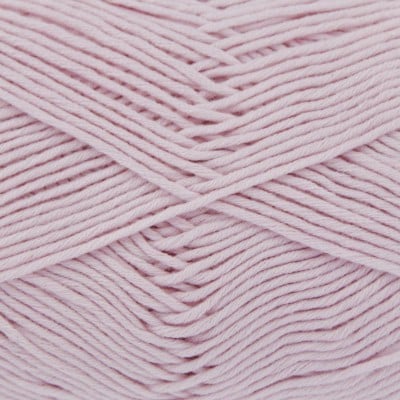Excellent Ideas On Deciding On Bamboo Clothing
Wiki Article
Why Are Yak Wool Base Layers Effective For Winter Sports Apparel In Terms Of Temperature Regulation, Warmth, Moisture Management, The Durability And Comfort?
Yak Merino Wool Base Layers excel in winter sport clothing due to the factors that improve the heat, temperature control and comfort.
Insulating Properties Merino and yak wool are naturally insulation. Yak fibers are hollow and hold in air to create warmth. Merino is another wool that is known for its ability to insulate.
Regulates the Body Temperature - The combined fabric regulates the body temperature, trapping the heat when it's cold, while allowing air move through to ensure that you don't get too hot when doing vigorous activities.
Moisture Management-
Merino is a moisture-wicking yarn. The properties of Merino draw moisture away and disperse the moisture, which stops sweat accumulation. Yak wool also helps to transport moisture, and keeps the wearer comfortable throughout exercising.
Comfort-
The softness Merino wool has soft fine fibers. They are soft and don't cause skin irritation. Adding yak fibers to the mix, which are soft, increases comfort.
Odor Resistant - Both types wool are antimicrobial and have natural properties which help to reduce the growth of odor-causing bacteria. They also help keep the clothes fresh.
Durability-
Strength and Resilience - Yak is a durable fiber, however when it is combined with merino, it gets stronger and more resistant to wear. This makes it suitable for vigorous activities.
Natural Fiber Benefits-
Renewability - Yak and Merino Wool are renewable and biodegradable fibres making them environmentally friendly.
They have a natural versatility that allows the use of these wools under a variety of weather conditions.
The combination of yak and merino makes use of the strengths of each material, creating an excellent fabric for providing warmth, regulating temperature, managing moisture, providing comfort and providing toughness. This is what makes yak and Merino wool bases layers ideal for winter sports wear. They are made to meet the demands of outdoor activity in cold climates while maintaining the wearer dry and warm. Have a look at the recommended merino wool base layer recommendations for blog recommendations including ski base layer womens, sweaty betty base layers, hh lifa merino, wool long underwear, smartwool 250 base layer, merino wool thermal underwear, smartwool thermal underwear, merino wool base layer sale, skiing mid layers, merino wool layers and more.

What Are Some Advantages Bamboo Clothing Can Provide In Terms Of Comfortability Sustainability, Durability And Security When It Is Used As Winter Outdoor Clothing?
Bamboo clothing comes with many benefits in terms of durability and comfort for outdoor winter clothing.
Bamboo fabric is considered to be soft and smooth. It is gentle on the body. The silky feel of bamboo fabric is frequently compared with cashmere or silk.
Bamboo fibers possess moisture-wicking characteristics that help to remove moisture and keeps users dry and comfortable when they're engaged in physical exercise.
Thermal Regulation- Bamboo clothing has natural temperature-regulating properties, providing warmth in winter while remaining breathable to prevent overheating.
Sustainability-
Bamboo is a natural resource that can be utilized to expand rapidly and with minimal pesticides. It is a material that is able to regenerate quickly, which makes it an environmentally friendly option.
Low Environmental Impact - Bamboo cultivation typically requires less water than conventional cotton farming and doesn't diminish soil nutrients. Bamboo is also able to absorb more carbon dioxide and release more oxygen into the air compared to other plants.
Protection for Outdoor Wear-
UV Protection Bamboo fabric is UV resistant and offers the natural shield against harmful sunlight rays.
Antibacterial properties- Bamboo is a natural antimicrobial agent called "bamboo kun," which can help to stop the growth of bacteria responsible for odor and keeps clothing fresher for longer periods, especially during outdoor activities.
Additional Benefits
Durability Bamboo fibers are known for their the highest degree of durability and are therefore suitable for outdoor clothing that is likely to be subjected harsh use.
Biodegradability. Bamboo clothing is biodegradable. They can be decomposed naturally after their time of life, reducing their environmental impact.
When used in outdoor winter clothes, bamboo fabric can provide an array of thermal control, comfort as well as moisture management and sustainability, which makes it a desirable choice for those seeking eco-friendly and performance-oriented clothes. Have a look at the best bamboo clothings tips for website recommendations including bamboo pants, bamboo yoga wear, bamboo terry fabric, bamboo ave shorts, bamboo clothing, bamboo shorts womens, bamboo material clothing, bamboo ave shorts, preemie bamboo pajamas, bamboo hoodie women's and more.

What Are The Differences Between Merino And Bamboo Clothes Differ From Eachother And Regular Wool?
Merino wool layers, bamboo clothing, and regular wool have distinct features that set them apart- Merino Wool
Merino wool's fine fibers are soft and it feels good against the skin. It is less likely to cause itching or irritation compared to traditional wool.
Merino Wool Has Excellent Moisture- Wicking Properties- Merino is a material that wicks moisture that pulls moisture away and allows it to evaporate. The wearer is dry and comfortable.
Merino is a great insulation when wet. It regulates your body temperature by providing insulation in cold temperatures and the ability to breathe during exercise.
Odor Resistant - It blocks the growth and spread of odor-causing bacteria So clothes stay fresher for a longer time.
Bamboo Clothing
Bamboo clothing is said to have a silky and soft texture that can be compared to cashmere or silk. It is silky soft on the skin giving a luxurious feel.
Bamboo fabric is wicks moisture away properties which draw moisture away and help keep you dry.
Temperature Regulation- Bamboo clothing has natural temperature-regulating abilities, offering warmth in winter and breathability to prevent overheating.
Sustainability- Bamboo is a very renewable resource, and it grows rapidly without the need for fertilizers or pesticides. It is biodegradable and has low environmental impact.
Regular Wool
Texture - The texture of traditional wool is different Some are coarser than others, and more prone to cause itching or discomfort.
Warmth - Regular Wool provides an excellent insulation, as well as warmth, although it may feel heavy and bulky at times.
Absorption of Moisture - Wool is able to absorb water, making it less effective at wicking moisture than merino and bamboo fabrics. Wool retains its warmth, even when damp.
The advantages of merino include its softness, moisture-wicking capability as well as resistance to odor and insulation. Bamboo clothing offers a silky texture, excellent moisture-wicking properties as well as temperature regulation and sustainability. Regular wool is different in its texture. It might not be as soft or possess the same moisture-wicking capabilities as bamboo or merino but provides warmth. Each type of material has its own advantages, catering to various needs and preferences for winter wear. Read the most popular here about bamboo winter clothing for more examples including best base layer for skiing, smartwool classic thermal merino quarter zip base layer top women's, patagonia merino wool base layer, merino wool thermals, smartwool 250 base layer, smartwool long sleeve, merino base layer, 100 merino wool base layer, snow base layers, heavyweight merino wool base layer and more.
